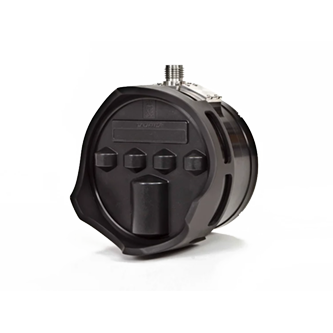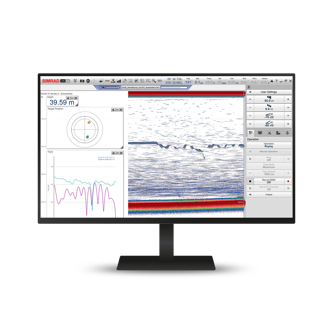
Dredging
An important part of civil engineering
Dredging is an important part of civil engineering. It brings valuable economic and environmental advantages to our society. It also plays a crucial role in supporting commercial maritime transportation by keeping shipping channels, berths, and turning basins in good condition.
Providing benefits to dredging contractors and operators
Commercial vessels are getting bigger to meet growing demand. Dredging helps maintain the authorized depths of larger vessel waterways. It also helps remove sediment carried by rivers or accumulated during major storms. In addition, dredging is essential for cleaning up contaminated sediments resulting from past industrial activities.
All of these efforts are carefully planned and monitored to ensure safe and environmentally responsible practices, resulting in an improved ecosystem for everyone involved.
However, dredging equipment is expensive. Contractors depend on their dredges working efficiently to make a profit. Most dredging contracts are for a fixed price. Under-dredging can lead to penalties, while over-dredging means extra out-of-pocket costs. Excess dredging not only affects profitability, but also adds to fuel consumption and environmental impact.
To avoid wasting time and money, contractors are increasingly turning to real-time dredge monitoring
KONGSBERG, in collaboration with SPE, offers solutions that help dredge owners and operators complete their tasks swiftly, accurately, safely, and efficiently. Our solutions maximize profitability, reduce excess costs, and minimize carbon emissions.
Real-time dredge monitoring for rotating cutter suction, clam shell, and backhoe dredges
Dredges can be expensive to operate. Without real-time dredge monitoring, dredge contractors must move the dredge away from the worksite. Then, the contractor must pay for a survey to confirm that the material was properly removed. This method incurs both downtime and survey expenses.
If the dredged area does not meet the specifications, the contractor must reposition the dredge a second time and pay for another survey, leading to further costs. To ensure they meet the specification on the second try, contractors may over-dredge. But they won't get paid for the extra work.
When speed isn't critical
For situations where highly-accurate data is more important than speed, Kongsberg offers the Dual Axis Sonar (DAS). This single-beam echosounder, mounted on a precise two-axis rotator, creates a 3D point cloud of the dredged area. The Operator can adjust the coverage area and scan speed, giving them precise control.
The sonar software corrects the data for factors like water temperature, salinity, and vessel motion, providing a real picture of the dredged area. Using the data with SPE’s dredge controls software will subtract it from the terrain map, so the operator can see the removed material compared to the specification line.
Using this solution, the operator can confirm compliance with the specification and keep working - without the need for costly third-party surveys.

Dual Axis Scanning Sonar
The Dual-Axis Scanning (DAS) Sonar is a profiling system designed for long-term seabed or structure monitoring. This scanning sonar is compatible with both the MS1000 software program and can operate in a 'standalone mode' where the data is logged in the head and transmitted to shore via cable or wireless telemetry.
Read more
When speed is critical
For situations where speed is crucial, Kongsberg’s M3 Sonar - mounted on a precise rotator - is the solution. Like the Dual Axis Sonar, the M3 Sonar also creates a 3D point cloud, but offers a faster response time.
When using the corrected sonar data with SPE’s dredge controls software, the operator sees the removed material compared to the design horizon. This feature allows operators to confirm they have met the dredging contract terms - before relocating the dredge to continue operations.
Speed is vital in firm-fixed contracts where time is money.
This solution also eliminates the need for third-party surveys by providing real-time feedback.

M3 Sonar
The innovative design of the M3 Sonar® uses two sets of complementary transducers which allow it to generate both imaging and bathymetric data with the same head. Unique to the M3 Sonar® is the patented eIQ (enhanced image quality) mode of operation that generates multibeam images with unprecedented clarity.
Read more
Monitoring turbidity during dredging is essential to protect the environment. Some dredged material may be polluted, impacting water quality. Other sediments, such as organic material and nutrients, reduce the water’s oxygen content if released. Dredge operators want to know the size and density of resuspended material, including the direction it is travelling.
EK80 with SPE
The EK80 system, integrated with SPE’s software, helps operators quantify and monitor underwater ecosystems. It provides crucial information about the size and density of disturbed sedimentation in the water column.
 Range of products
Range of productsScientific echo sounder
EK80 is a high-precision scientific echo sounder and ADCP system designed to quantify and monitor underwater ecosystems. The EK80 is a modular system capable of operating several different transceiver and transducer combinations, all through the same operator station.
Read more
We offer comprehensive after-sales assistance
-
24/7 Technical support
Our Technical Support team is readily available to provide global 24/7 support and can respond to resolve any issues at any time, wherever you are located in the world.
-
Training
We can provide detailed training on the use of our products to ensure your crew is equipped with the necessary operational competence to minimise technical risk and maximise return on your asset investment.